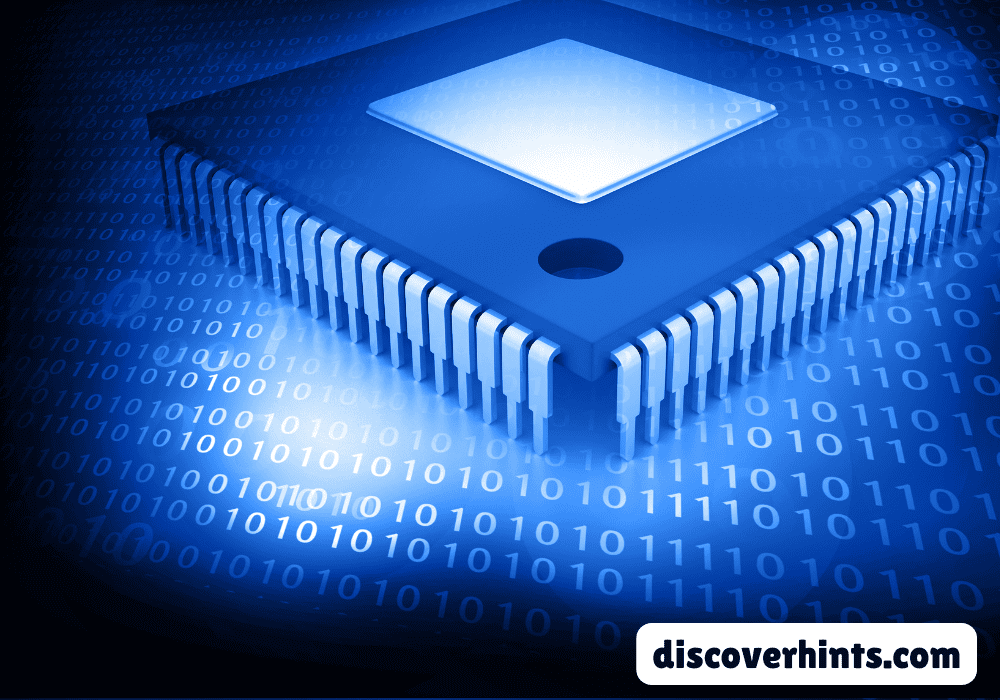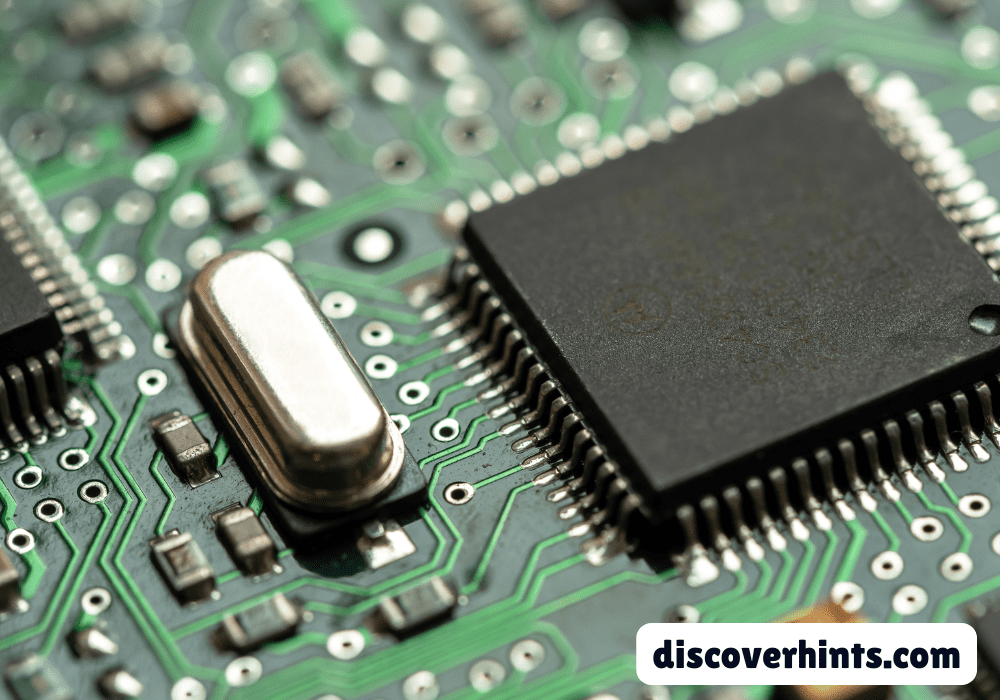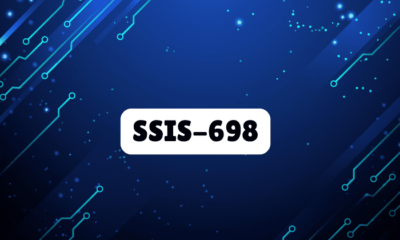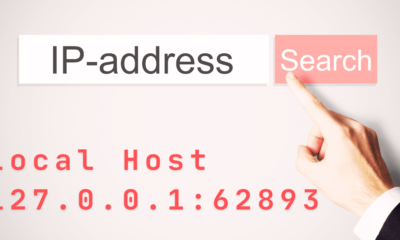Tech
The Ultimate Guide to Pixels Lookup: Everything You Need to Know
Introduction
In the world of digital imaging, design, and technology, the term “Pixels Lookup” has become increasingly significant. Whether you are a graphic designer, photographer, web developer, or simply someone who wants to understand how images work, understanding Pixels Lookup can significantly enhance your ability to work with digital images.
In this comprehensive guide, we’ll dive deep into the concept of Pixels Lookup, explaining its importance, how it works, and how you can use it to improve your work with digital images. We’ll also cover the tools available for Pixels Lookup, their practical applications, and provide answers to some of the most frequently asked questions.
What is Pixels Lookup?
Defining Pixels
Before delving into Pixels Lookup, it’s essential to understand what pixels are.”Picture elements,” sometimes known as pixels, are the smallest possible unit of a digital image that may be seen on a screen. Each pixel is essentially a tiny square or dot that, when combined with millions of others, forms the complete image you see on your screen.
Pixels carry color information, represented in the RGB color model (Red, Green, Blue) or other color models, and their arrangement and intensity create the visual representation of an image.
What Does Pixels Lookup Mean?
Pixels Lookup refers to the process of examining or analyzing the individual pixels that make up an image. This can involve identifying the color, brightness, and other attributes of specific pixels within an image. Pixels Lookup is commonly used in various fields, including photography, digital art, web design, and computer vision, to fine-tune images or extract specific data from them.
The Importance of Pixels Lookup in Digital Imaging
Precision in Image Editing
One of the most significant benefits of Pixels Lookup is the precision it offers in image editing. By examining individual pixels, designers and photographers can make minute adjustments to colors, contrasts, and other image attributes, leading to more refined and professional-looking results.
Enhancing Image Quality
Pixels Lookup can also be used to enhance the overall quality of an image. By identifying and correcting problematic pixels, such as dead pixels or areas of color distortion, you can improve the clarity and vibrancy of an image.
Applications in Web Design

For web developers, Pixels Lookup can be invaluable in ensuring that images are optimized for various screen sizes and resolutions. This ensures that websites look consistent and visually appealing across different devices.
Computer Vision and Machine Learning
In the fields of computer vision and machine learning, Pixels Lookup is often used to analyze image data for various applications, such as object recognition, facial recognition, and autonomous driving technologies. By examining pixels, algorithms can learn to identify patterns and make decisions based on visual input.
How Pixels Lookup Works
The Basics of Pixels Lookup
At its core, Pixels Lookup involves accessing the data that each pixel in an image holds. This data typically includes:
- Color Information: Each pixel’s color is usually represented in the RGB model, where each color component (Red, Green, and Blue) is assigned a value between 0 and 255. By looking up the values for each pixel, you can determine its exact color.
- Brightness: This refers to the intensity or lightness of a pixel. By analyzing the brightness values, you can adjust the contrast and exposure of an image.
- Transparency: Some pixels also include transparency information, often represented by an alpha channel. This is particularly important in graphic design and web development for creating images with transparent backgrounds.
Tools for Pixels Lookup
Several tools and software are available that allow you to perform Pixels Lookup on digital images. Among the most well-liked ones are:
1. Adobe Photoshop
Adobe Photoshop is one of the most widely used image editing tools and offers robust features for Pixels Lookup. The software allows you to zoom into an image at the pixel level, inspect individual pixels, and adjust their color values as needed.
2. GIMP (GNU Image Manipulation Program)
GIMP is a free, open-source alternative to Photoshop that also provides powerful Pixels Lookup capabilities. It supports various file formats and offers tools for precise pixel-level editing.
3. ImageJ
ImageJ is an open-source image processing program primarily used in scientific imaging. It includes a range of tools for Pixels Lookup, such as the ability to analyze the color and brightness of individual pixels.
4. PixelZoomer (Browser Extension)
PixelZoomer is a browser extension that allows web developers to zoom into web pages and perform reverse phone lookup pixel directly in the browser. It’s particularly useful for checking the alignment and quality of images in web design.
5. Online Tools
Several online tools are available for quick Pixels Lookup without the need for software installation. These tools typically allow you to upload an image and inspect its pixels directly through your web browser.
Steps to Perform Pixels Lookup
Here’s a step-by-step guide to performing reverse phone lookup pixel using Adobe Photoshop:
- Open Your Image: Start by opening the image you want to examine in Photoshop.
- Zoom In: Use the zoom tool to magnify the area of the image you want to inspect. You can zoom in to see individual pixels clearly.
- Select the Eyedropper Tool: The Eyedropper tool allows you to sample colors from specific pixels. Click on the Eyedropper tool in the toolbar.
- Inspect the Pixel: Click on the pixel you want to examine. Photoshop will display the RGB values of the selected pixel in the color picker.
- Adjust as Needed: If necessary, you can use Photoshop’s editing tools to adjust the color, brightness, or other attributes of the pixel.
- Save Your Work: After making any adjustments, save your image to preserve the changes.
Applications of Pixels Lookup

Photography
In photography, Pixels Lookup is used to enhance images by adjusting individual pixels’ colors and brightness. This can be particularly useful for correcting exposure issues, removing unwanted artifacts, and improving the overall visual quality of an image.
Digital Art and Illustration
For digital artists and illustrators, Pixels Lookup allows for precise control over the colors and textures in their work. By adjusting pixels at the micro-level, artists can create detailed and vibrant digital art.
Web Development
Web developers often use reverse phone lookup pixel to ensure that images are correctly optimized for the web. This includes checking pixel density, ensuring color consistency, and making sure images load efficiently without losing quality.
Computer Vision
In computer vision, Pixels Lookup is used to analyze and interpret visual data. By examining the pixels in an image, algorithms can detect patterns, recognize objects, and make decisions based on the visual information.
Scientific Imaging
In fields such as medical imaging and astronomy, Pixels Lookup is used to analyze images for research and diagnostics. By examining pixels, scientists can extract critical information from images that may not be visible to the naked eye.
Challenges and Considerations in Pixels Lookup
High Resolution vs. Low Resolution
One of the primary challenges in pixel reverse phone lookup is dealing with different image resolutions. High-resolution images contain more pixels, allowing for greater detail but also requiring more processing power. Low-resolution images, on the other hand, have fewer pixels, which can limit the precision of Pixels Lookup.
Color Accuracy
Ensuring color accuracy during reverse phone lookup pixel is crucial, especially in fields like digital art and photography. Color profiles, monitor calibration, and file formats all play a role in how accurately colors are represented.
Performance and Processing Power
Performing pixel reverse phone lookup on large or complex images can be demanding on your computer’s processing power. This is particularly true when working with high-resolution images or performing detailed analysis in scientific imaging.
Software Limitations
Not all image editing software provides robust Pixels Lookup capabilities. It’s essential to choose tools that offer the features you need for your specific application.
Advanced Techniques in Pixels Lookup
Using Algorithms for Pixels Lookup
In more advanced applications, algorithms can be used to automate Pixels Lookup. For example, machine learning models can be trained to recognize specific patterns in pixels, such as identifying objects in an image or detecting anomalies in scientific data.
Integration with AI
Artificial intelligence (AI) is increasingly being integrated with Pixels Lookup processes. AI can enhance pixel reverse number lookup by automatically adjusting image attributes, identifying patterns, and improving the accuracy of visual data analysis.
Batch Processing
When working with multiple images, batch processing can be used to perform pixel reverse number lookup across several files simultaneously. This is particularly useful in applications like web development, where consistency across multiple images is critical.
Real-Time Pixels Lookup
In some cases, real-time pixel reverse phone lookup is required, such as in video processing or live-streaming applications. This involves analyzing pixels on the fly as they are being captured or displayed.
The Future of Pixels Lookup
Emerging Technologies
As technology continues to evolve, so too will the capabilities of Pixels Lookup. Emerging technologies like quantum computing, augmented reality, and advanced machine learning models will likely play a significant role in the future of reverse phone lookup pixel.
Greater Automation
Automation is expected to become more prevalent in Pixels Lookup, reducing the need for manual intervention and allowing for faster, more accurate analysis of visual data.
Broader Applications
As pixel reverse number lookup technology advances, its applications will likely expand into new fields, such as virtual reality, autonomous vehicles, and advanced medical diagnostics.
Conclusion
pixel reverse phone lookup is an essential tool in the digital world, offering precision and control over how we interact with images. Whether you’re a photographer, digital artist, web developer, or scientist, understanding Pixels Lookup can greatly enhance your work with digital images. As technology continues to evolve, the capabilities and applications of Pixels Lookup will only grow, making it an increasingly valuable skill in various fields.
5 Unique FAQs About Pixels Lookup
1. What is the difference between Pixels Lookup and Pixel Art?
Pixels Lookup involves analyzing and adjusting individual pixels in an image, while pixel art is a form of digital art where images are created and edited at the pixel level. Pixel art uses low-resolution images deliberately, focusing on the aesthetic created by the visibility of each pixel, whereas Pixels Lookup is a more technical process used for precision editing and analysis.
2. Can Pixels Lookup help in improving the resolution of an image?
Pixels Lookup itself does not improve the resolution of an image, as it deals with the analysis of existing pixels. However, by identifying issues at the pixel level, such as color distortion or pixelation, you can make adjustments that enhance the perceived quality of the image.
3. How can Pixels Lookup be used in data visualization?
In data visualization, pixel reverse number lookup can be used to examine the granular details of visual representations, such as heat maps or color-coded graphs. By analyzing the individual pixels, you can gain a better understanding of the underlying data and ensure accurate representation.
4. Is Pixels Lookup relevant for video editing?
Yes, pixel reverse phone lookup is relevant for video editing, especially when working with individual frames. By examining the pixels in each frame, you can make precise adjustments to color grading, brightness, and contrast, leading to a higher-quality video.
5. Are there any mobile apps that offer Pixels Lookup functionality?
There are several mobile apps that offer Pixels Lookup functionality, including tools like Adobe Photoshop Express and Pixelmator. These apps allow you to zoom in on images and analyze individual pixels directly from your smartphone or tablet, making it convenient for on-the-go editing.
Tech
Is www gravityinternetnet the Best ISP for You? A 2025 Review

With everything from work to entertainment moving online, a strong internet connection has become an everyday essential.
Whether you’re working from home, streaming your favorite shows, or gaming online, the quality of your internet service can significantly impact your experience. Enter www gravityinternetnet, a rising star in the ISP world that promises to redefine how we connect online.
But with numerous ISPs available, what sets www gravityinternetnet apart? Let’s delve into its offerings and see if it lives up to the hype.
What Is www gravityinternetnet?
“www.gravityinternetnet is a modern internet provider redefining connectivity by using state-of-the-art technology to deliver fast, stable, and cost-effective internet access.” Unlike traditional ISPs that rely solely on wired connections, Gravity InternetNet combines fiber-optic, 5G, and satellite technologies to ensure seamless connectivity across urban and rural areas.
Key Features:
- High-Speed Internet: Offers speeds up to 1 Gbps, ideal for streaming, gaming, and large file downloads.
- Affordable Pricing: Transparent pricing with no hidden fees, catering to various budgets.
- Wide Coverage: Utilizes a mix of fiber-optic and satellite technologies to reach underserved areas.
- Always-on Support: Get help any time of day with responsive, around-the-clock customer service designed to resolve issues quickly.
Why Choose www gravityinternetnet?
1. Unmatched Speed and Reliability
With internet speeds reaching up to 1 Gbps, www gravityinternetnet ensures smooth streaming, lag-free gaming, and quick downloads. Their hybrid approach, combining fiber-optic and satellite technologies, guarantees consistent performance even in remote locations.
2. Transparent and Affordable Pricing
Say goodbye to hidden fees and unexpected charges. “With straightforward and budget-friendly plans, www.gravityinternetnet makes it easy to know exactly what you’re paying for, no hidden fees, just solid value.”
3. Comprehensive Coverage
Whether you’re in a bustling city or a remote village, www gravityinternetnet’s use of satellite and fiber-optic technologies ensures you stay connected. This extensive coverage makes it an excellent choice for users in underserved areas.
4. Robust Security Measures
In an era of increasing cyber threats, www gravityinternetnet prioritizes user security. The platform employs advanced encryption protocols and data protection measures to safeguard users’ personal and financial information.
5. Exceptional Customer Support
www.gravityinternetnet puts user satisfaction first, shaping its services around the needs and expectations of its customers. Their 24/7 support team is readily available to assist with any technical or billing issues, ensuring a hassle-free experience for users.

How Does www gravityinternetnet Compare to Other ISPs?
| Feature | www gravityinternetnet | Competitor A | Competitor B |
| Max Speed | 1 Gbps | 500 Mbps | 300 Mbps |
| Pricing Transparency | Yes | No | Yes |
| Rural Coverage | Extensive | Limited | Moderate |
| 24/7 Support | Yes | No | Yes |
| Security Features | Advanced Encryption | Basic | Moderate |
Note: Competitor data is illustrative.
Real User Experiences
A growing number of users have praised www.gravityinternetnet for its reliable service and user-friendly experience.
“Switching to it was the best decision. The speed is incredible, and I haven’t experienced any downtime.” – Sarah L., California
“As a remote worker, reliable internet is crucial. www gravityinternetnet has exceeded my expectations.” – James T., Texas
Conclusion
In the competitive world of internet service providers, it stands out by offering high-speed, reliable, and affordable internet solutions. With its innovative use of technology, transparent pricing, and exceptional customer support, it’s a compelling choice for users seeking a superior internet experience.
FAQs:
- What areas does www gravityinternetnet serve?
- www gravityinternetnet provides coverage across various regions, including both urban and rural areas. For specific service availability, visit their coverage page.
- Are there any data caps with www gravityinternetnet?
- No, www gravityinternetnet offers plans without data caps, ensuring unlimited browsing and streaming.
- How can I contact customer support?
- For assistance anytime, simply contact their support team via email.
- Is there a contract required?
- www gravityinternetnet offers both contract and no-contract plans, providing flexibility based on your preferences.
- What devices are compatible with their service?
- Their service is compatible with a wide range of devices, including smartphones, laptops, smart TVs, and more.
Also Read: Worty34: Everything You Need to Know About
Tech
ADE8606: A Guide to Integrated Circuit

In the world of electronics and integrated circuits (ICs), the ADE8606 stands out as a highly specialized component designed for specific use cases. Whether you’re an electrical engineer, a student, or a tech enthusiast, understanding the ADE8606 can be crucial for projects requiring precision in data conversion, energy measurement, or signal processing.
This guide will take an in-depth look at what the ADE8606 is, how it functions, its applications, and why it is important in modern electronic designs. We will also cover frequently asked questions to address any lingering doubts or queries about this powerful integrated circuit.
Introduction to the ADE8606
The ADE8606 is an energy measurement integrated circuit produced by Analog Devices. This IC is designed for precise measurement and processing of electrical parameters, making it an ideal choice for applications that require high accuracy in energy monitoring. With its ability to perform various signal processing tasks, including analog-to-digital conversion, the ADE8606 is often used in smart meters and industrial applications.
What Makes the ADE8606 Stand Out?
The ADE8606 stands out due to its integrated architecture, which combines multiple functions into a single chip. It is specifically designed to handle voltage, current, and power measurements with a high level of precision, which is critical for systems that require real-time energy monitoring and billing.
How Does the ADE8606 Work?
The ADE8606 works by converting analog signals, such as voltage and current, into digital signals. These digital signals are then processed to provide accurate measurements of electrical parameters. This IC uses a variety of filters, amplifiers, and analog-to-digital converters (ADCs) to ensure that the data is both accurate and stable.
Signal Processing Capabilities
The ADE8606 processes the incoming signals through its internal digital filters to remove noise and improve signal accuracy. It also has built-in calibration routines, allowing for error correction in real-time.
Key Features of the ADE8606

The ADE8606 offers a range of features that make it highly suitable for energy measurement and data acquisition systems.
- High-Resolution Analog-to-Digital Conversion (ADC): The IC offers a high-resolution ADC, ensuring accurate data conversion from analog to digital signals.
- Wide Dynamic Range: The ADE8606 can measure a broad range of input signals, from low to high levels, without losing accuracy.
- Low Power Consumption: Despite its advanced features, the ADE8606 is designed to be power efficient, which is crucial for applications that operate continuously.
- Calibration Support: The IC provides on-chip calibration, which improves the accuracy of measurements over time.
- Robust Signal Filtering: The ADE8606 includes robust digital filters that eliminate noise and interference from the input signals.
Applications of the ADE8606
The ADE8606 finds use in various applications where precise energy measurement and data processing are necessary.
- Smart Meters: The ADE8606 is widely used in smart meters to measure electricity consumption accurately and in real-time.
- Industrial Energy Monitoring Systems: Factories and large industrial setups often rely on the ADE8606 for tracking energy usage and improving energy efficiency.
- Renewable Energy Systems: Solar and wind power systems use the ADE8606 to monitor energy production and ensure optimal performance.
- Data Acquisition Systems: In systems that collect and process large amounts of data from sensors, the ADE8606 provides accurate conversion of sensor data into usable information.
Understanding the Functional Block Diagram of the ADE8606
The functional block diagram of the ADE8606 helps in understanding how this IC operates. It typically includes the following main components:
- Analog Front-End (AFE): The AFE conditions the input signals (voltage and current) and prepares them for digital conversion.
- Analog-to-Digital Converters (ADCs): These converters transform the analog signals into digital data that can be processed by the system.
- Digital Signal Processor (DSP): The DSP processes the digital signals to extract accurate measurements and apply filters.
- Calibration and Error Correction Unit: This unit automatically adjusts the measurements to correct any drift or errors.
Understanding the block diagram is critical for engineers when designing circuits that include the ADE8606, as it outlines the IC’s internal functionality and signal flow.
How to Use the ADE8606 in Circuit Design
Designing a circuit that incorporates the ADE8606 requires attention to detail to ensure accurate performance. Here are the steps to successfully implement the ADE8606 in your circuit design:
- Step 1: Define Your Application Needs: Begin by identifying the electrical parameters you need to measure, such as voltage, current, and power.
- Step 2: Set Up Power Supply: Ensure that the power supply to the ADE8606 is stable and within the recommended voltage range.
- Step 3: Configure Input Signal Conditioning: Use appropriate resistors and capacitors to condition the input signals before feeding them into the ADE8606.
- Step 4: Implement Proper Grounding: Grounding is critical to reduce noise and interference in the measurement signals.
- Step 5: Program Calibration: Use the ADE8606’s on-chip calibration features to fine-tune the accuracy of your measurements.
Comparison Between ADE8606 and Other Similar ICs

When comparing the ADE8606 to other ICs used for energy measurement, such as the ADE7758 and the MCP3909, it’s essential to consider the following factors:
- Accuracy: The ADE8606 offers higher precision due to its advanced calibration and filtering features.
- Power Consumption: The ADE8606 is more energy-efficient, making it ideal for long-term applications like smart meters.
- Dynamic Range: While some ICs might perform well at specific ranges, the ADE8606 has a broader dynamic range, making it more versatile.
- Ease of Use: The ADE8606 is designed for ease of implementation, with built-in features that reduce the complexity of circuit design.
Why Choose the ADE8606 for Energy Measurement?
The ADE8606 is specifically engineered for energy measurement, offering exceptional accuracy and reliability. Here’s why it stands out for such applications:
- High Precision: Its high-resolution ADCs and filtering techniques ensure that energy measurements are highly accurate, which is critical for billing purposes.
- Low Power Operation: For devices that need to operate 24/7, such as smart meters, low power consumption is a major benefit.
- Real-Time Data Processing: The ADE8606 processes energy data in real-time, making it ideal for applications that require immediate feedback.
The Role of ADE8606 in Data Conversion
The ADE8606 plays a vital role in converting analog signals from electrical systems into digital data. Its high-resolution ADCs allow for precise measurement, and its digital filters remove noise to ensure the accuracy of the converted data.
This conversion capability is essential in modern electronics, where real-time data monitoring and energy efficiency are priorities.
Power Efficiency of the ADE8606
One of the standout features of the ADE8606 is its power efficiency. Designed to consume minimal power while still delivering high performance, it is ideal for use in systems that need to run continuously without frequent maintenance or battery changes.
Common Challenges When Using the ADE8606
While the ADE8606 is a powerful IC, users may encounter several challenges, including:
- Signal Noise: In environments with high levels of electromagnetic interference, signal noise can affect the accuracy of the measurements.
- Calibration Complexity: Setting up the calibration routines correctly can be time-consuming for those unfamiliar with the process.
- Power Supply Stability: An unstable power supply can lead to inaccurate measurements or malfunction of the IC.
Best Practices for Implementing ADE8606 in Projects
To get the best results from the ADE8606, follow these best practices:
- Proper Grounding: Always ensure that your circuit is grounded correctly to minimize noise.
- Stable Power Supply: Use a regulated power supply to prevent voltage fluctuations.
- Shielding: In high-noise environments, consider shielding your circuit to protect against electromagnetic interference.
How to Source the ADE8606
Finding a reliable source for the ADE8606 can be challenging due to its specialized nature. Some of the most reliable places to purchase this IC include:
- Authorized Distributors: Companies like Digi-Key and Mouser Electronics offer genuine ADE8606 ICs.
- Direct from Manufacturer: Purchasing directly from Analog Devices ensures that you receive the most up-to-date version of the IC.
Future Trends and Developments in ICs like the ADE8606
As technology continues to evolve, ICs like the ADE8606 will become even more advanced. Future trends include:
- Increased Integration: More functionality will be built into a single IC, reducing the need for multiple components.
- Lower Power Consumption: Expect even lower power requirements as efficiency becomes a growing concern.
- Enhanced Accuracy: Advances in ADC technology will lead to even more precise measurements.
Frequently Asked Questions (FAQs) About the ADE8606
1. What is the ADE8606 used for?
The ADE8606 is primarily used for accurate energy measurement in applications like smart meters, industrial energy monitors, and renewable energy systems.
2. How accurate is the ADE8606?
The ADE8606 is highly accurate due to its high-resolution ADCs and built-in calibration routines. It can measure electrical parameters with precision even in noisy environments.
3. Can the ADE8606 be used in renewable energy systems?
Yes, the ADE8606 is commonly used in renewable energy systems to monitor energy production and ensure that power is being efficiently managed.
4. How do I calibrate the ADE8606?
The ADE8606 has on-chip calibration features, which can be programmed to adjust the IC for accurate measurements over time.
5. Where can I buy the ADE8606?
The ADE8606 can be purchased from authorized distributors like Digi-Key, Mouser Electronics, and directly from Analog Devices.
Conclusion
The ADE8606 is a highly specialized integrated circuit designed for precise energy measurement and signal processing. With its advanced features, it is the go-to solution for smart meters, industrial applications, and renewable energy systems. By understanding its capabilities, applications, and best practices, you can make the most of this powerful IC in your projects.
Tech
Understanding 11.11.11.21:5000 – Networking and Port Management

In the world of computer networking, IP addresses and port numbers play a critical role in facilitating communication between devices. One specific combination that has sparked curiosity and importance in recent times is 11.11.11.21:5000. While this may seem like a random sequence of numbers, it actually represents a crucial part of network management and system configuration. In this detailed guide, we will dive into the significance of 11.11.11.21:5000, explain its meaning, use cases, and how it fits into the broader context of networking, including its role in server management, firewalls, and troubleshooting.
What is 11.11.11.21:5000?
The string 11.11.11.21:5000 consists of two main components: an IP address (11.11.11.21) and a port number (:5000). In networking terms, an IP address uniquely identifies a device on a network, while the port number serves as a virtual point where network communications start and end. When combined, 11.11.11.21:5000 refers to a specific communication endpoint on a server or system.
This endpoint can be used for a variety of purposes, such as hosting a web application, communicating with APIs, or accessing databases. While the IP address specifies the location of the device, the port number determines which application or service on that device is being accessed.
Understanding IP Address 11.11.11.21
Private vs. Public IP Addresses
In networking, there are two types of IP addresses: public and private. Public IP addresses are used on the open internet, allowing communication between devices across the globe. Private IP addresses, on the other hand, are used within local networks and cannot be accessed from outside without proper routing and port forwarding.
Is 11.11.11.21 a Private or Public IP?
The IP address 11.11.11.21 falls under the public IP address range. However, it is not a commonly used public IP for consumer-facing services. Instead, it may be used in controlled environments like corporate networks, testing servers, or internal systems that require a specific configuration.
What Does :5000 Represent?
Port Numbers and Their Role in Networking
Port numbers are essential to differentiate between various services running on the same IP address. Every service or application that needs to communicate over a network is assigned a port number. Port numbers range from 0 to 65535, with specific ranges reserved for common services (e.g., port 80 for HTTP and port 443 for HTTPS).
Common Uses of Port 5000
Port 5000 is often associated with certain development environments, especially in web development. In many cases, developers use port 5000 to test applications locally before deploying them to production servers. This port is also used by certain database systems and web frameworks like Flask (a Python web framework) for testing purposes.
How 11.11.11.21:5000 is Used in Web Development
Localhost and Port Forwarding
In web development, developers frequently work with local servers on their machines using IP addresses like 127.0.0.1 (localhost). However, when developing in a networked environment, they might use 11.11.11.21:5000 for testing or accessing applications from other devices within the same network. Port forwarding may be used to route external traffic to a specific port, allowing access to services running locally.
Testing Web Applications
Developers commonly utilize port 5000 during the testing phase of web applications. For instance, frameworks like Flask and Django bind to port 5000 when running in development mode, enabling developers to access the application through the browser using 11.11.11.21:5000.
Server Management and 11.11.11.21:5000
Setting Up Servers with IP
In server management, configuring an IP address with a port number is standard practice. For example, a web server might run on 11.11.11.21:5000, meaning that the server can be accessed via this specific endpoint. This configuration is essential for organizing traffic and managing multiple services on the same machine.
Monitoring Traffic on Port 5000
Administrators can monitor traffic flowing through port 5000 using various network monitoring tools. By doing so, they can ensure that the service running on that port is healthy, track performance, and identify any potential security risks.
Security Considerations for 11.11.11.21:5000
Firewall Configuration
One of the key security measures for managing 11.11.11.21:5000 is properly configuring firewalls. Firewalls can be set up to allow or deny traffic to this specific port based on the organization’s security policies. Misconfigurations, however, can lead to vulnerabilities and expose sensitive services to unauthorized access.
Potential Vulnerabilities and Mitigations
Ports are frequent targets of attackers looking for open points to exploit. Port 5000, being commonly used in development, may be exposed if not properly secured. Employing strategies like whitelisting IP addresses, using strong authentication mechanisms, and enabling encryption can mitigate these risks.
Networking Tools to Troubleshoot 11.11.11.21:5000
Ping, Traceroute, and Port Scanning
When troubleshooting connectivity issues with 11.11.11.21:5000, network administrators often use tools like Ping to check the availability of the IP address, Traceroute to map the path between the local machine and the destination, and Port Scanning to verify whether port 5000 is open and accepting connections.
8. How to Access 11.11.11.21:5000
Remote Access Techniques
To remotely access 11.11.11.21:5000, one must configure the network appropriately. This often involves setting up secure tunnels (like SSH) or VPNs to connect to the network hosting the server. Proper authentication is also critical to prevent unauthorized access.
Configuring Browser and Software
For web-based applications, accessing 11.11.11.21:5000 typically involves entering the IP address and port into a web browser. For API services or database connections, custom software or scripts may need to be configured to direct traffic to this specific IP
Use Cases for 11.11.11.21:5000 in Real-World Scenarios
Web Servers
In some web hosting scenarios, 11.11.11.21:5000 might be assigned to a specific service or sub-application. For example, the main site might run on port 80, while a secondary service (like an API) operates on port 5000.
API Communication
API developers may use 11.11.11.21:5000 to test or run backend services that interface with front-end applications. This ensures that different microservices within the same network can communicate effectively without port conflicts.
Database Access
Some database management systems use port 5000 to allow connections from client applications. 11.11.11.21:5000 could represent a database endpoint where users query data, manage tables, or perform administrative tasks.
Best Practices for Managing Ports Like 5000
Ensuring Optimal Network Performance
When managing ports like 5000, it’s essential to periodically review network performance and ensure that traffic is flowing smoothly. Load balancing, traffic segmentation, and proper bandwidth allocation are key considerations for network administrators.
Avoiding Common Mistakes
A common mistake is leaving unnecessary ports open or misconfiguring firewalls, leaving services exposed to potential attacks. Regular audits of open ports and security configurations are necessary to prevent such issues.
Common Issues Encountered with 11.11.11.21:5000
Connection Refused Errors
One of the most common errors encountered with 11.11.11.21:5000 is a “Connection Refused” message. This may happen if the service running on port 5000 is down, misconfigured, or blocked by a firewall.
Misconfiguration Problems
Misconfiguring IP addresses or ports can lead to downtime and connectivity issues. It’s crucial to verify network settings, ensure that services are bound to the correct IP
combination, and troubleshoot using network tools when issues arise.
How to Secure 11.11.11.21:5000 in a Production Environment
Enabling Encryption
When using 11.11.11.21:5000 for sensitive services, it’s critical to encrypt the data being transmitted. SSL/TLS certificates can be installed to secure communication between clients and servers, ensuring that data is not intercepted during transmission.
Using Strong Authentication Methods
To prevent unauthorized access to 11.11.11.21:5000, implementing strong authentication mechanisms is essential. This includes using complex passwords, enabling two-factor authentication (2FA), and employing role-based access control (RBAC).
Case Study: Real-Life Application of 11.11.11.21:5000
In a real-world scenario, 11.11.11.21:5000 might be used for a web application that handles internal employee data. A company could deploy a Flask-based dashboard on port 5000, allowing employees to log in, view performance data, and access reports. The security team would configure firewalls to restrict access to authorized IP addresses and secure the endpoint with SSL encryption.
Difference Between 11.11.11.21:5000 and Other IP Configurations
Comparing Different Port Numbers
While port 5000 is often used for development purposes, other ports serve different functions. For instance, port 80 is used for HTTP traffic, and port 22 is used for SSH. Each port has its own set of protocols and best practices depending on its application.
Advantages and Disadvantages
Using 11.11.11.21:5000 for development environments offers flexibility and ease of use, but it may require additional security measures in production to prevent unauthorized access and potential breaches.
Future Trends in Networking and the Role of Port Management
As network infrastructures evolve, the role of IP
configurations like 11.11.11.21:5000 will continue to be crucial. With the rise of containerization and microservices, managing individual service endpoints using unique ports will become even more critical. New tools and techniques for better securing and monitoring ports will emerge as the need for more efficient, scalable networking solutions grows.
Frequently Asked Questions (FAQs)
1. What is the significance of 11.11.11.21:5000?
11.11.11.21:5000 represents a specific endpoint in networking, where the IP address (11.11.11.21) designates the device, and the port number (5000) identifies the service or application being accessed.
2. How do I access 11.11.11.21:5000 from my browser?
To access 11.11.11.21:5000, you would type “http://11.11.11.21:5000” into your web browser. Ensure the server is running and accepting connections on port 5000.
3. Is 11.11.11.21:5000 secure for web applications?
While 11.11.11.21:5000 can be used in web applications, it’s essential to implement security measures like encryption (SSL/TLS) and proper firewall configurations to protect the endpoint.
4. Can I change the port number from 5000 to something else?
Yes, the port number can be changed if necessary. However, the service must be configured to listen on the new port, and the firewall settings need to be updated accordingly.
5. Why might I encounter “Connection Refused” on 11.11.11.21:5000?
This error typically occurs when the service running on port 5000 is down or misconfigured, or if the firewall is blocking the connection.
-

 Blog9 months ago
Blog9 months agoOkiha18 Convenience Store Things: A Comprehensive Guide
-

 Automotive8 months ago
Automotive8 months agoGorilla Kustoms: Pioneering Vehicle Personalization in Gosford, New South Wales
-

 Real Estate7 months ago
Real Estate7 months agoWhat Are the Benefits of Regular Pressure Washing for Seattle Commercial Properties?
-

 Tech10 months ago
Tech10 months agoSSIS-698: Why This Unique Code Is Important
-

 Lifestyle11 months ago
Lifestyle11 months agoHow Old is Lil Meech? Age, Height, Family & More
-

 Tech11 months ago
Tech11 months ago127.0.0.1:62893: Common Uses and Best Practices
-

 Lifestyle11 months ago
Lifestyle11 months agoSoymamicoco and Its Remarkable Benefits – Ultimate Guide
-

 Biography11 months ago
Biography11 months agoAll About Kristy Greenberg Wikipedia : Biography and More


